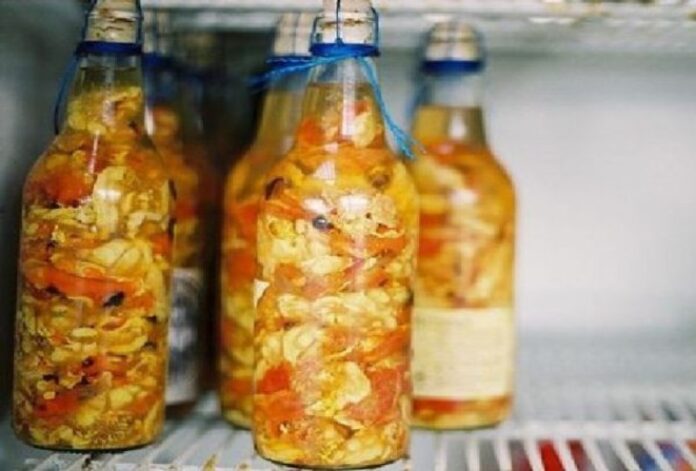We are in Kalymnos, located in Greece’s Dodecanese group of islands in the southeastern Aegean Sea. It is known as the “Island of Sponge-Divers”, because of the considerable growth and development of sponge-fishing that took place on the island, which came to be one of the most important centers of Sponge-fishing in the Mediterranean Sea from the end of the 18th century onwards.
In the homeland of fishermen and divers the visitor will savor an enormous variety of seafood dishes.
Delights that range from all kinds of fresh fish, grilled octopus, minced octopus balls, oysters, lobster tails to fried octopus ink sacs.
But among them there is one dish that represents not only the island’s unique cuisine, but also its rich seafaring tradition: spinialo, a dish of sea squirts (fouskes) marinated in a bottle of seawater.

Although they are cleverly disguised as rocks, sea squirts are actually primitive marine vertebrates.
They are like a hard sponge and attach themselves to rocks, shells, and even ships’ hulls.
However, when cut in half, they reveal soft, yellow-orange flesh, with a strong and bitter flavor and a texture that’s similar to scrambled eggs.
Spinialo was originally a fishermen’s dish, eaten by the sponge-divers of Kalymnos who had to preserve their food to last for long sea voyages.
Before modern refrigeration came to the island, fishermen would preserve sea-squirt flesh in empty wine bottles filled with seawater and a dash of olive oil. The combination was typically served on barley rusks drizzled with lemon, and it was used as a dish eaten on long sponge diving trips.
Scallops, fan mussels, devil fish, or sea urchins are also often added to the mix.
Thanks to the salt in the seawater, a bottle of spinialo could last for months on end!
Still today, authentic spinialo is still made in a bottle of seawater.
Although it can be occasionally found also in restaurants, fishermen still make it on their boats and sell it in fish markets, carrying on their time-honored culinary heritage.
info: random-times
















